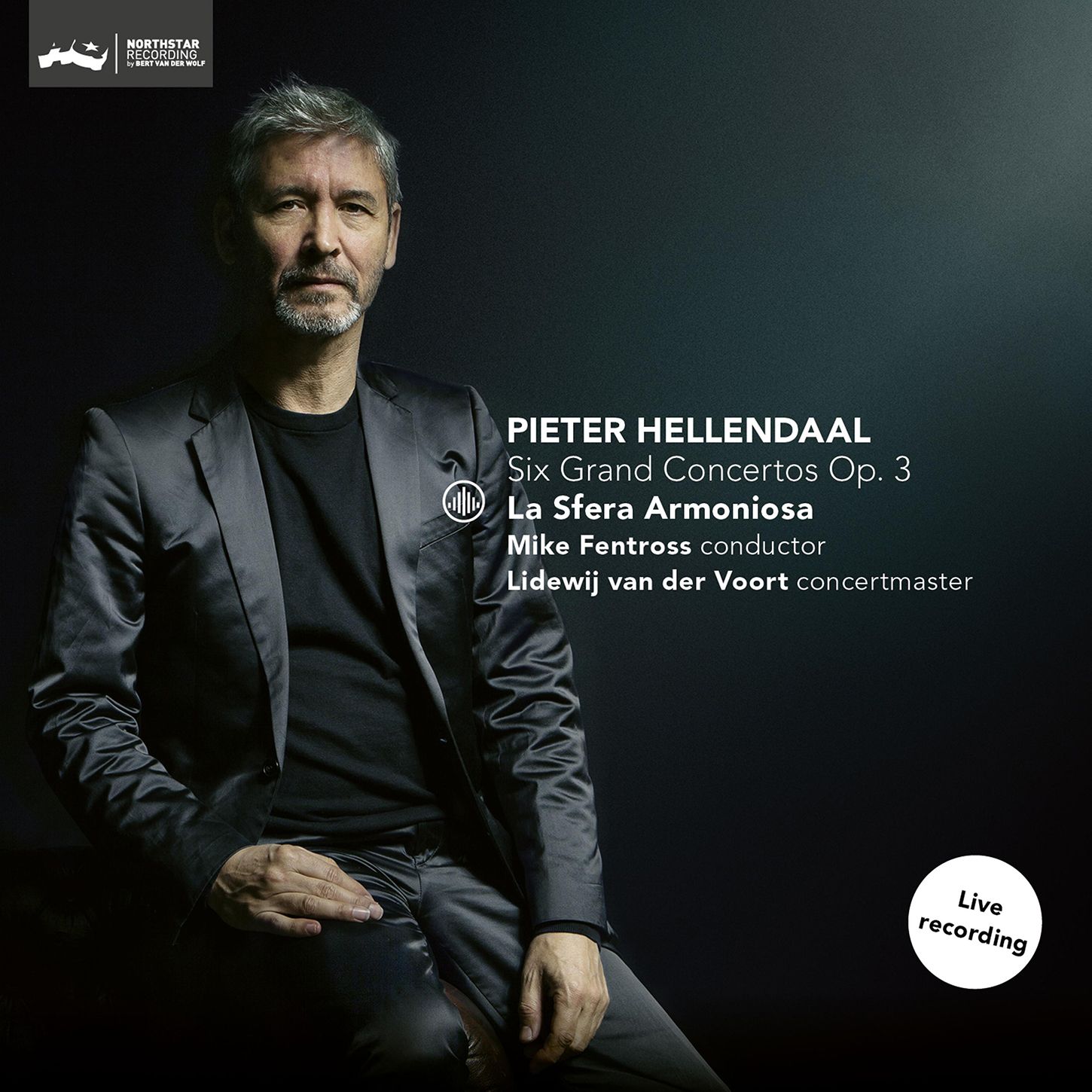Hellendaal Grand Concertos, Op. 3

It's not often I begina post with a music example, but if you have never heard of Pieter Hellendaal (1721-1799) before, have a listen to this, the Ouverture to the first piece heard here, the Grand Concerto in G-Minor, Op. 3/1:
Several things stand out - the grandeur of the opening, and the fabulous scamperings of the Allergo, and finally the superb accuracy and period precision of the performance by Le Sfera Armoniosa and Mike Fentross. Worth pondering, too, on the depth of the brief third movement, a Largo:
Between the two is an expertly wrought, active Fuga, superbly performed here. A robust Presto leads to a closing Menuet (the sixth Grand Concerto also ends with a Menuet, incidentally, giving the set a nice sense of symmetry).
So, who was Pieter Hellendaal? Born in Rotterdam in 1722, son of a candle maker, he trained with Tartini in Padua around 1740 as violinist and copmoser, later moving to Amsterdam before arriving in London in 1751. He stayed intil 1760, and these concertos were published by Joh Walsh in 1758. He moved subsequently to Cambridge, where he was organist at Penbroke Hall Chapel, and spend the rest of his days there.
The Sic Grand Cocertos are, amazingly, his only known works for orchestra. I use the word 'amazingly', given the skill and craftsmanship the exude at every turn. Listen to the post-Corelli skill of the second movement Allegro from Concerto II in D minor:
These pieces follow a traditional 'grand concerto' form of four movements, but each has an added fifth movement, a dance movement (a Bourée, Pastorale and two Marches in addition to the Menuets already mentioned). The level of invention is staggering. A personal choice, but I do feel Hellendaal shows particular skill in the busy fast fourth movements (usually, but not always, a Presto). But each Grand Concerto has its own magnificent character and each contains gems. Try this glorious slow movement, an Adagio, from Concerto III:
As the concertos progress numerically, the length of the opening slow sections increase until they achieve an existence of their own instead of being a precursor to an allegro. The Grave sostenuto that opens the fourth is a case inpoint, at 3"37 the longest single movement (so far) in the cycle, and how beautifully shaded it is here:
The fourth is an emotionally complex Concero, as it also includes a remarkable Affetuoso movement and the most remarkable Pastorale, scored brilliantly and full of imagination, yet staying true to the roots of its title:
Lovely to hear Ventross' theorbo nicely active in the Largo from Concert V (D-Major), a movement I hear as somewhat Handelian; certainly not, though, the Allegro that follows, with its surprisingly sharp gestural outlook - and some lovely solo violin contributions from Lidewij van der Woort, the concertmaster of La Sfera Armoniosa. Note also how it goes interior and reflective at the end to lead into the Concerto's Larghetto:
A jaunty March closes Grand Concerto V, positively ceremonial in gait:
The final Grand Concerto, in F-Major, is shot through with beauty (the close of the opening Largo), rustic joy (the ensuing Allegro); and harbours an exquisite Adagio:
There is something I have not mentioned (deliberately) until now. The sheer perfection of ensemble and intonation implies a studio recording, yet the spirit and verve are those of live provenance. It's the latter - these are live performances from St Laurenskerk in Hellendaal's native Rotterdam given on October 7, 2021. Applause is retained only after the final movement of the final concerto.
At the time of writing, this disc is discouned some 22% at the Amazon link below; with a playing time of just under 80 minutes, too, that isn't bad ...
